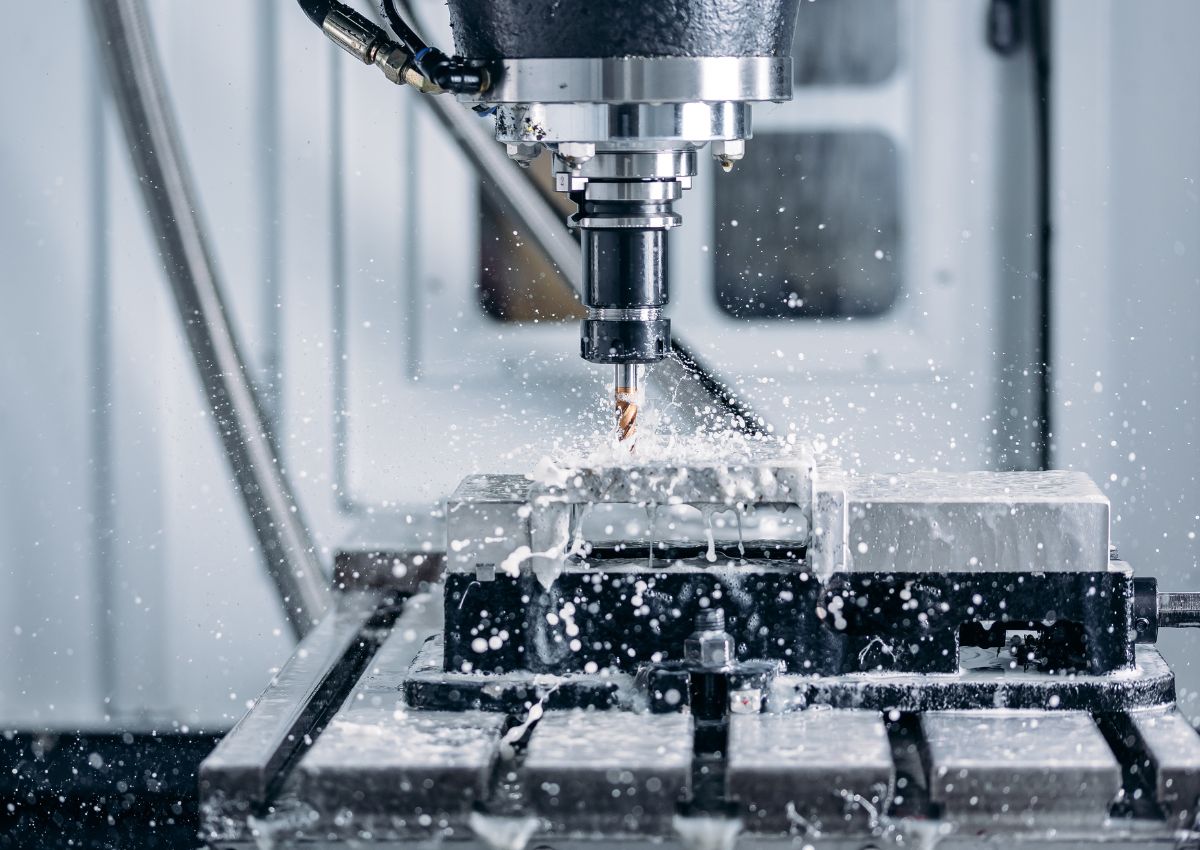While they invented CNC milling machines in 1952, the manufacturing industry didn’t begin to benefit from this technology until after 1967. According to market projections, the global CNC milling machines market will exceed $25 billion by 2028.
Computer Numerical Control machining, also known as CNC machining, is a cost-effective method of increasing efficiency in the workplace. Various industries, including marine, aerospace, automotive, and medical, are increasingly turning to them to manufacture intricate and complex parts. The reason is the many advantages they have over traditional methods.
Businesses use CNC machines for milling, drilling, and turning. Drills operate by spinning the drill bit, while lathes work by moving the material against the drill bit. CNC milling uses rotary tools to remove material from the unit. With Computer Numerical Control, all these machining types have become more efficient and accurate, thus providing several benefits.
What are the Advantages of CNC Machines?
The advantages of the CNC machines include:
Improved Personnel Safety
The CNC machine isolates machines from humans and mitigates risks associated with it. The CNC machinery can operate without an operator, reducing accidents and dangers to life and limb. Nowadays, CNC machines can even change the tools they use automatically! The software can cause a change in design even if you or the device is not in direct contact with it.
Because of this, it limits human intervention to supervisory tasks. Remotely monitoring the software program’s execution and performing reactive or preventive maintenance allows you to avoid problems. It minimizes the need to engage and creates a safer working environment.
Labor Economics
The operator needs to observe each part of a traditional machine tool and move it accordingly to operate it. So, each worker will run only one machine tool at a time. Since the advent of CNC machines, they process most pieces in about half an hour during each setup. An operator does not need to do anything to use the tool.
Operators only need to check for errors in the setup or program when the tool automatically moves. When this happens, the operator is free to operate more devices during the time in between. You can save money by hiring one operator to use several machine tools instead of hiring more employees.
Reduce Human Error and Inconsistencies
Handmade products or parts are not as consistent and accurate as those made with CNC machinery. A CNC machine creates multiple pieces that are virtually identical with an average variation of less than 0.020mm—sometimes as little as 0.003mm using design software, detailed model references, and precision tools. No conventional machine can duplicate these results, not even the most advanced. Consequently, you’ll get a very uniform product.
It is imperative in industries requiring high uniformity, such as automotive, aerospace, dentistry, and medical. Also, it’s crucial for companies that build complicated machines or electronics that need to fit perfectly. A slight variation in size, shape, or texture might lead to a malfunction in the final product. It enables you to replicate any object repeatedly, regardless of how complex or detailed it is.
Fast and Efficient
An operator often has to change cutting tools manually when operating a conventional milling machine. The operator’s judgment determines the results, which are time-consuming and inefficient.
The rotating carousels of CNC mills can accommodate up to 30 different tools. The spindle automatically exchanges these tools during machining, facilitating efficient and rapid cutting operations. You can create your parts quickly with CNC mills, whereas conventional methods may require days (or weeks).
Better Quality Finish with Water Or Oil-Based Coolants
Using methods other than CNC-based machining can result in low accuracy levels due to vibrations. Because of this vibration, conventional cutting is not as precise as CNC machining.
CNC machining creates a better surface finish than conventional cutting because it does not cause vibrations and is not as noisy as traditional cutting. CNC technology reduces secondary operations like polishing, which is both time-consuming and costly.
What are the Disadvantages of the CNC Machines?
The disadvantages of the CNC machines include:
High Initial Purchase Cost
You may initially see CNC machining as an expensive option. Despite the expense, it is an investment in long-term savings, increased efficiency, and client retention. CNC services cost more initially. It is common for businesses across a wide variety of industries to rely on a trusted vendor for CNC machining services. It will be more expensive to produce the first run than subsequent runs.
Renders Skills Obsolete
CNCs also work toward making conventionally manual skills obsolete, which some machinists believe is a disadvantage. Hands-on training, such as operating lathes, mills, drills, and more, equips students with math and science skills. Many businesses have benefited from CNC machining, but it has also reduced conventional machining, leading to job losses. Many experts disagree, however, that manual skills will disappear. Some believe that small and specialty projects will support traditional machining.
Is CNC Machinery Right For You?
If you want to know whether CNC machinery is right for your project, it will help to speak with an experienced manufacturing engineer who can explain the advantages and disadvantages. Besides your manufacturing budget, they’ll consider how many units you need, how fast you’d like them built, and how complicated the part is. You’ll benefit from this customized, holistic approach to manufacturing.











